A collaborative effort by Campaign for a Commercial-Free Childhood, Alliance forChildhood, and Teachers Resisting Unhealthy Children’s EntertainmentThe authors of this guide represent three organizations whose missions overlap in a commitment to the wellbeing of children. We share concerns about the escalating misuse and overuse of screen technologies in the lives of even the very young. We recognize the primary importance of nurturing young children’s active and hands-on creative play, time with nature, and their face-to-face interactions with caring adults and other children. We see how screen time can interfere with these and other essentials of early childhood. (download pdf)

Player. Jock. Slacker. Competitor. Superhero. Goofball. Boys are besieged by images in the media that encourage slacking over studying; competition over teamwork; power over empowerment; and being cool over being yourself. From cartoons to video games, boys are bombarded with stereotypes about what it means to be a boy, including messages about violence, risk taking, and perfecting an image of just not caring. Straight from the mouths of over 600 boys surveyed from across the U.S., the authors offer parents a long, hard look at what boys are watching, reading, hearing, and doing. They give parents advice on how to talk with their sons about these troubling images and provide them with tools to help their sons resist these messages and be their unique selves.

Girls are besieged by images in the media that encourage accessorizing over academics, sex appeal over sports, fashion over friendship. Packaging Girlhood exposes these stereotypes and gives you guidance on how to talk with your daughters about these negative images and provides you with tools and information on how to help your girls make more positive choices.

In democratic societies, there is a tension between freedom of speech rights and the harm that might be done to children through commercial messages. This book explores all of these issues and looks to the future in considering how effective codes of practice and regulation will develop.
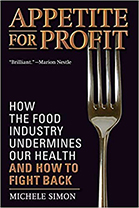
The U.S. is currently embroiled in a national debate over the growing public health crisis caused by poor diet. People are starting to ask who is to blame and how can we fix the problem, especially among children. Major food companies… continue to lobby against commonsense nutrition policies. Appetite for Profit exposes this hypocrisy and explains how to fight back by offering reliable resources. Readers will learn how to spot the PR and how to organize to improve food in schools and elsewhere.
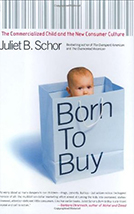
Marketing targeted at children is becoming increasingly invasive. Born to Buy examines how marketing efforts have created commercialized children. It explores the consequences of the commercialization of childhood and provides guidelines for parents and teachers for combating the new consumer culture.

An investigative journalist examines how marketers exploit infants and toddlers and the broad, often shocking impact of that exploitation on our society… She shows how we can help our kids live at their natural pace, not the frenetic clip that serves only the toddler-industrial complex. Buy, Buy Baby helps us fight the power marketers wield by exposing the false fears they spread.

This book aims to present recent studies by researchers working in the field of consumption, advertising, and media in relation to children. The purpose is to shed light on the relationship between consumer behavior, advertising, and communication in general with a special focus on children and adolescents.

Marketing executives undermine children’s health, education, creativity and values for the sake of commercial gain. Consuming Kids is an exploration of the multi-billion dollar marketing maelstrom that is aimed at children. It outlines the pervasiveness of marketing to children, and details what has to be done to stop it.
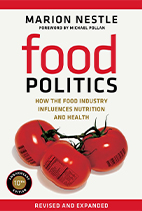
Editor of the 1988 Surgeon General’s Report on Nutrition and Health, Nestle is uniquely qualified to lead us through the maze of food industry interests and influences. She vividly illustrates food politics in action: watered-down government dietary advice, schools pushing soft drinks, diet supplements promoted as if they were First Amendment rights. When it comes to the mass production and consumption of food, strategic decisions are driven by economics–not science, not common sense, and certainly not health.

Montgomery examines the ways in which the new media landscape is changing the nature of childhood and adolescence and analyzes recent political debates that have shaped both policy and practice in digital culture. Her unique perspective as both advocate and analyst will help parents. politicians, and corporations take the necessary steps to create an open, diverse, equitable, and safe digital media culture for young people.

Provides an in-depth study of those American families and individuals who opt not to watch television, exploring the reasons behind their choices, discussing their beliefs about television, and examining the current role of television in the American family.
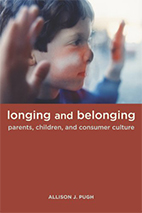
Pugh masterfully illuminates the surprising similarities in the fears and hopes of parents and children from vastly different social contexts, showing that while corporate marketing and materialism play a part in the commodification of childhood, at the heart of the matter is the desire to belong.
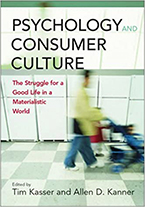
[C]onsumerism and the culture that surrounds it exert profound and often undesirable effects on both people’s individual lives and on society as a whole. Far from being distant influences, advertising, consumption, materialism, and the capitalistic economic system affect personal, social, and ecological wellbeing on many levels …Contributors provide a variety of potential interventions for counteracting the negative influence of consumerism on individuals and on society.
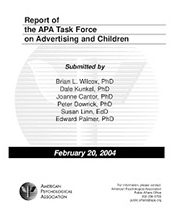
The Task Force on Advertising and Children (TFAC) grew out of a general concern about the influence of commercialism in children’s lives and about marketing and advertising to children and adolescents. This report summarizes the findings and conclusions of the TFAC.

An historical overview of how commercial activity in educational settings has grown into a substantial global force. This book contends that corporate influences on public education have shifted the priorities of schooling from “promoting the general welfare and strengthening civil society” to profit seeking. Cans of Coke in school cafeterias, corporate-sponsored curriculum in classrooms, and private management of public schools are all exposed in School Commercialism as bottom-line initiatives that motivate corporate sponsorship of educational activities and undercut the democratic goals of public education.
111 East Myrtle Street
Hailey, ID 83333-5127